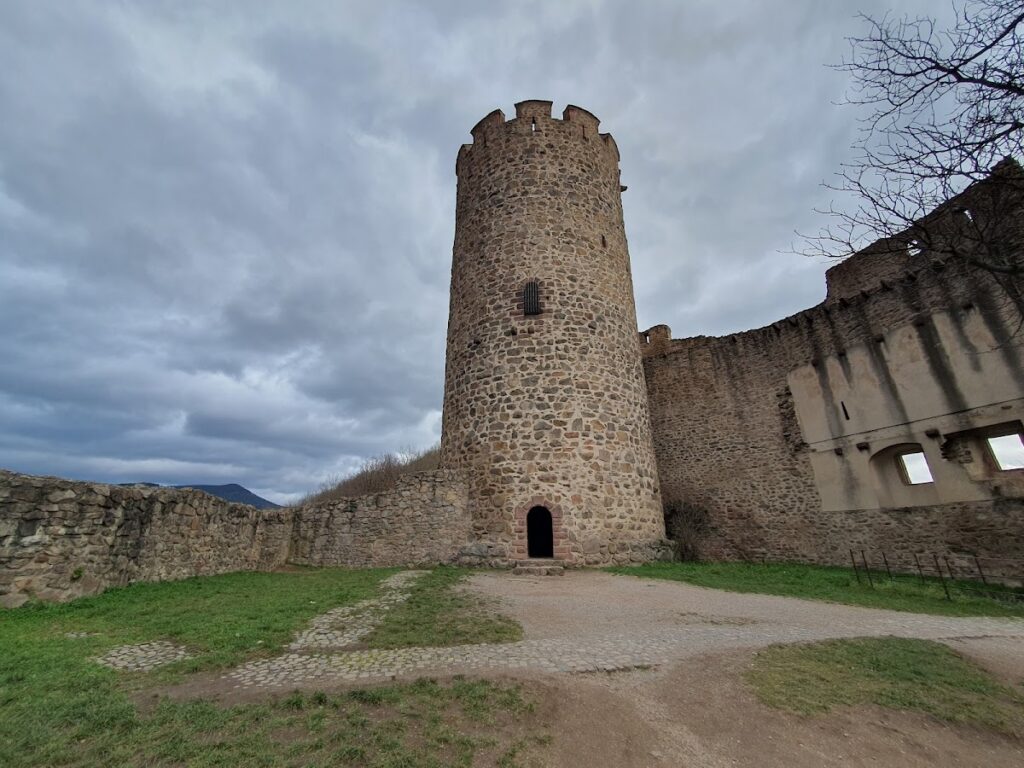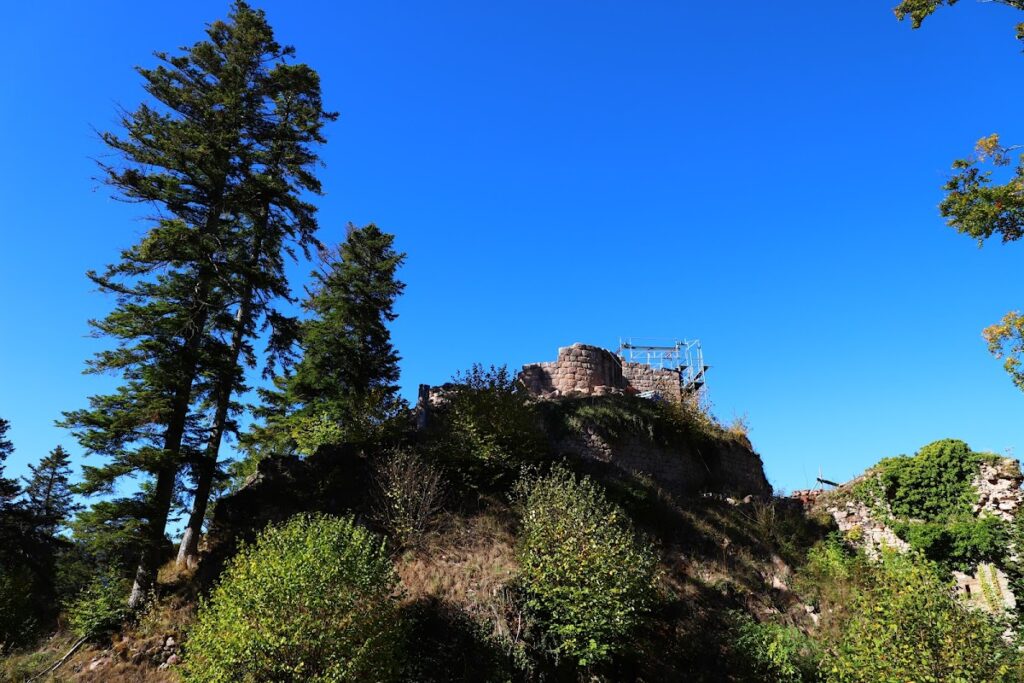Château de Kagenfels: A Medieval Castle in Ottrott, France
Visitor Information
Google Rating: 4.2
Popularity: Very Low
Google Maps: View on Google Maps
Official Website: www.kagenfels.org
Country: France
Civilization: Unclassified
Remains: Military
History
Château de Kagenfels is located in Ottrott, France, and was originally constructed during the medieval period by the people of the Holy Roman Empire. Its beginnings trace back to the mid-13th century when Albrecht Kage, a ministerial servant working under Bishop Walter von Geroldseck of Strasbourg, initiated the construction in 1262. This occurred amid a conflict between the bishopric and the city of Strasbourg. Although building began earlier, official permission to erect the castle was granted by King Rudolf I of Habsburg in 1289, solidifying its legal status within the empire’s feudal system.
Throughout the 14th and 15th centuries, Château de Kagenfels experienced several changes in ownership. It passed into the hands of figures such as Albrecht von Schoenau and Friedrich von Stahel von Westhoffen, before coming under the control of the Hohenstein family. By 1424, the castle was recorded as a fief of the Bishop of Strasbourg, indicating its ties to ecclesiastical authority. This period was also marked by repeated military action; the castle withstood at least four significant sieges in the years 1383, 1390, 1397, and 1424. The warfare involved the use of heavy siege artillery, reflecting the evolving nature of medieval combat.
An incident in 1406 highlighted challenges of maintaining such fortifications when a fire, accidentally started during a servant’s bath, destroyed several buildings within the castle complex. In response, Heinrich von Hohenstein led extensive repairs and upgrades. Among these was the creation of a sawmill nearby to ensure a steady supply of timber for reconstruction and maintenance. This effort demonstrated the castle’s ongoing strategic importance during the early 15th century.
By the mid-16th century, the castle changed hands again, purchased in 1559 by Lucas von Visebock. He focused on expanding the castle’s economic infrastructure, likely improving its ability to support the household and garrison. In 1563, Lucas sold Château de Kagenfels and its lands to the town of Obernai, transferring control away from the nobility to municipal authorities.
The castle’s active use appears to have declined during the early 17th century, likely as a result of the disruptions caused by the Thirty Years’ War. Documents from 1664 describe Château de Kagenfels as a ruin, indicating abandonment and dilapidation. The site remained largely forgotten until 1828, when it was once again identified by name and recorded in historical accounts. Since 1999, heritage organizations have undertaken archaeological excavations and partial restoration, revealing more about the castle’s past while stabilizing its remains.
Remains
The layout of Château de Kagenfels originally centered around a residential tower and a bergfried, which is the main tower used for defense. These structures were surrounded by fortified walls and protected by a moat, a water-filled ditch designed to hinder attackers. The surviving ruins include remnants of the surrounding curtain walls, fragments of the towers, and traces of the moat, offering a glimpse into the castle’s defensive design.
The residential tower was a substantial structure, measuring roughly 13.8 by 15.5 meters, with walls about 1.5 meters thick, constructed mainly of granite stone. This sturdy material was typical of the region and chosen for its durability. Archaeological work has revealed portions of the tower’s foundations and walls, giving insight into the living quarters of the castle’s inhabitants.
Excavations have also uncovered a collection of stone cannonballs scattered across the site, direct evidence of the heavy artillery warfare the castle endured during multiple sieges in the late medieval period. In addition, a stone altar was found, suggesting a place used for religious observances within the castle’s confines, aligning with its connection to the Bishop of Strasbourg.
Though the castle has suffered from centuries of decay, since 1999 efforts have been made to consolidate the ruins and carry out partial rebuilding. These renovations have included the careful reuse of original architectural elements found onsite, aimed at preserving the structure’s authenticity while preventing further deterioration. The castle is located within a forested area alongside eight other medieval castles near Mont Sainte-Odile, a region noted for its dense concentration of historical fortifications, including Birkenfels, Dreistein, and Hagelschloss. This cluster forms a distinctive medieval landscape reflecting the complex feudal and military history of the area.










